MA (間, Japanese, literally: “gap”, “space”, “pause”) is that,
between things,
between sounds and images
and also what is between the living beings.
It is the relationship of the contents of being and also of the relationships to each other.
Separate yourself from all things and also separate yourself from separation.
Nothing can be more beautiful than the human face, which is divine.
Libera me, Domine.
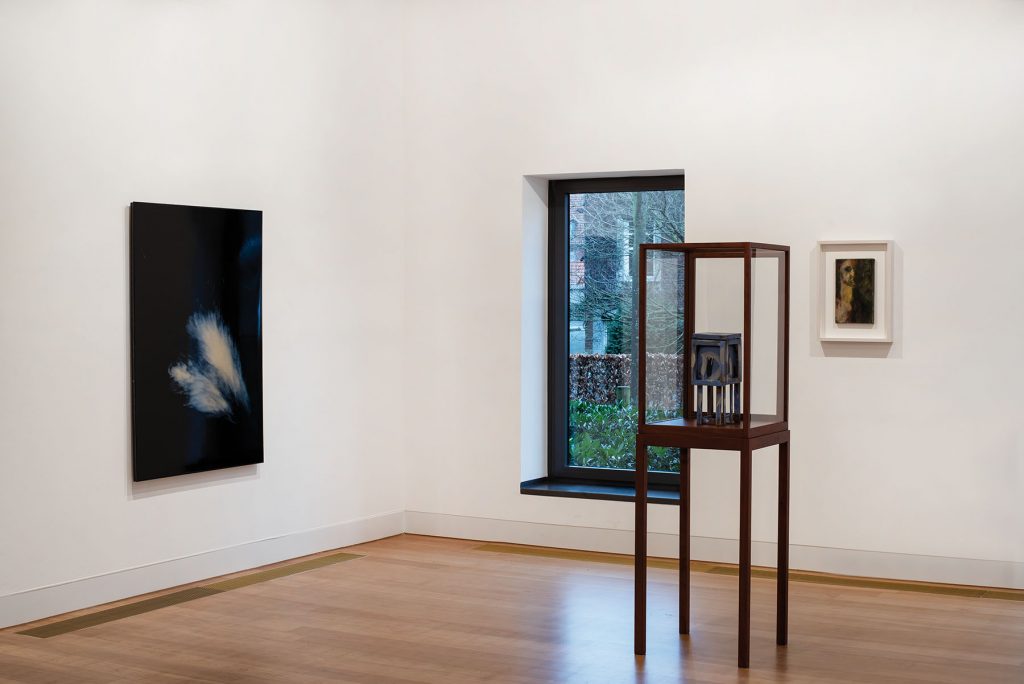
T H R E E P A I N T E R S
ULRICH
At first he painted spaceships and underground secret worlds, full of science fiction scenarios, later classical motifs without absurdity, referentiality, irony, context. Like earlier painters, he placed himself in front of his subject and wanted to counterpoint in one sitting. He wanted to demonstrate painting substance on the motif, partly expressive, partly impressionistic, partly gestural. Later he allowed a painting to develop over months and rediscovered the factor of time, in the making of a painting, which allowed him to immerse himself again meticulously in details, as he did then with his old spaceships and visions of technology. He missed nothing, no reference to modernity, to post-modernity, to the after-post-modernity, as this time just called itself. Later he was looking for a colleague with whom he could exhibit together, who would question his reminiscences of past painting styles and epochs (which were, however, basically timeless) with his work, in order to take into account the zeitgeist of his epoch, whose achievement was, among other things, to present the medium of painting in a distanced way. He found this colleague.
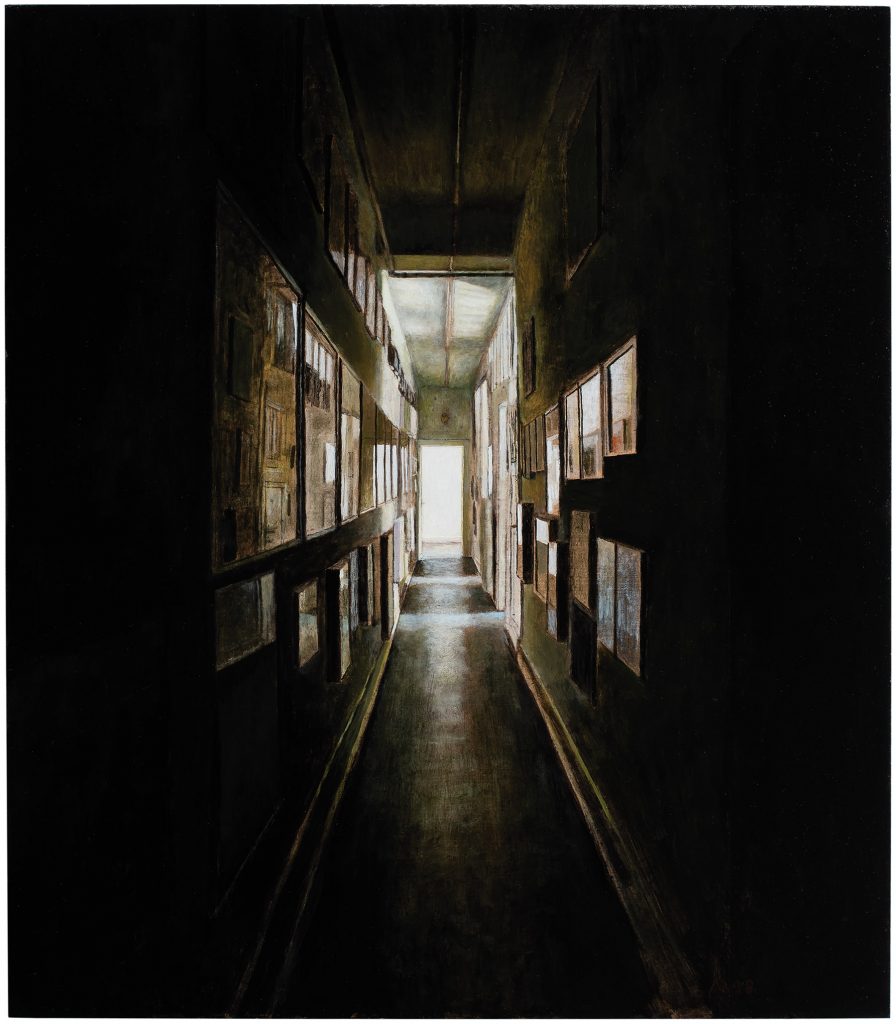
HANS
Hans always wanted to be modern, avant-garde, spearhead of progress. As a student in high school, he photographed and painted cubist images, color rhythms, geometries. Then the material of his paintings itself became the object and he became a concrete artist, as it was called, let the painting process, the “paint”, itself generate the image. Became monochrome, became the inventor of a painting technique that created new color spaces by means of the color flows of a resin. He noticed that the paintings he created were not as “modern” as he had always wanted originally. He conceived sculptures, objects, even figurative objects, installations, superstructures, substructures, philosophies that were behind everything, he claimed for himself a fly-over mentality that would underline his bold modern attitude – in vain. But to develop modernity in a single image seemed to him redundant, hermetic, and ultimately impossible without becoming an employee of himself, trapped in the postulate of fulfilling a modernist mission. This is how he formulated it for himself and yet continued to dream, his dreams of modern art. That’s when he met his colleague Ulrich with his representational paintings, with his childlike approach. This was exactly what he had been looking for, to finally be modern. The juxtaposition, interaction with Ulrich’s pictures transposed, mobilized his non-representational achievements. Made the interference, the harmony between the two so different findings to the expression carrier. That Hermann, the third painter, without paintings, unhomely and friendly, haunted the two and brought them home, was a miracle.
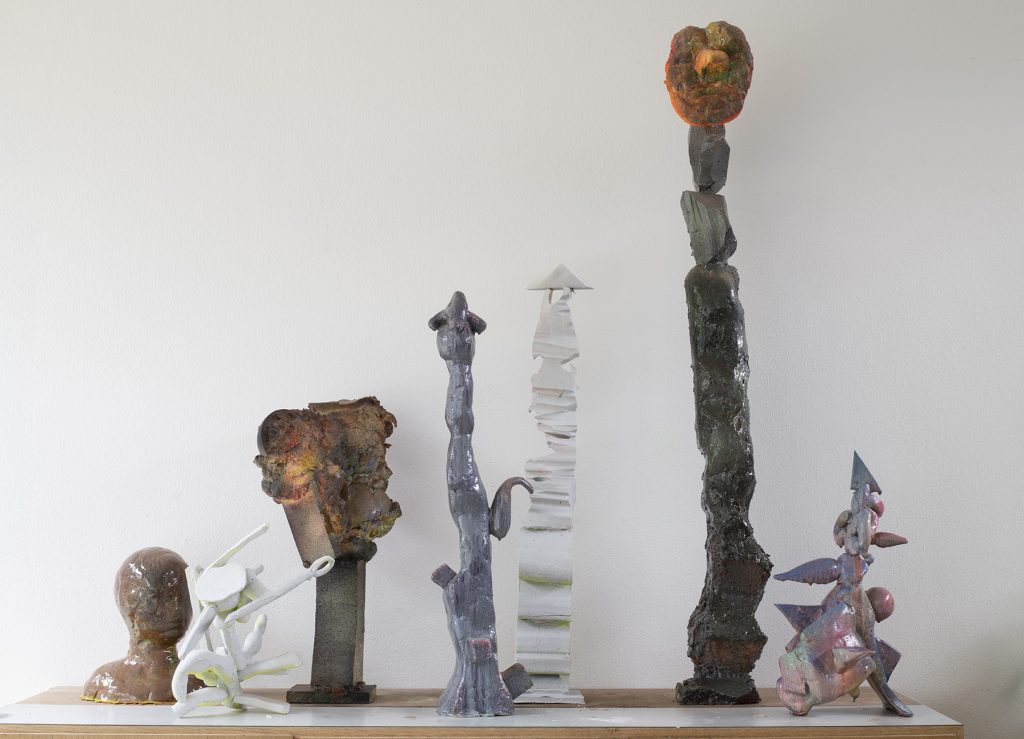
HERMANN
Quite quietly and close to the two of them lived an artist named Hermann. It was he who reconciled Ulrich and Hans, brought them together and, yes, overcame them. He always wanted to work in silence, not to be famous, as a figure of fame. He did not want to be an artist at all. Nor did he want to be a philosopher or anything. He was just himself and he did the following: He prayed to God, of whom it is said that he became flesh and dwelt among us. This he not only believed, but he observed. He knew that it was as it was written down. That which was handed down coincided with his observation. What he had to proclaim was enlightenment, not faith. He was a painter through and through because he could really see. There was nothing that he did not recognize in a compositional context. He had the great fortune, unlike the other two, to be perfectly happy and without fear. He became a father and achieved something that Ulrich and Hans had not, he became free through love itself. He invited the two of them to his home. He lived in places of art during this time. These places were possible for him everywhere, museums, galleries, art associations, churches, schools, the street, the landscape, the room, the inner world and the outer world. A decisive encounter with the two painters took place in Coesfeld in 2021, where Hermann once again encountered the body of painting.
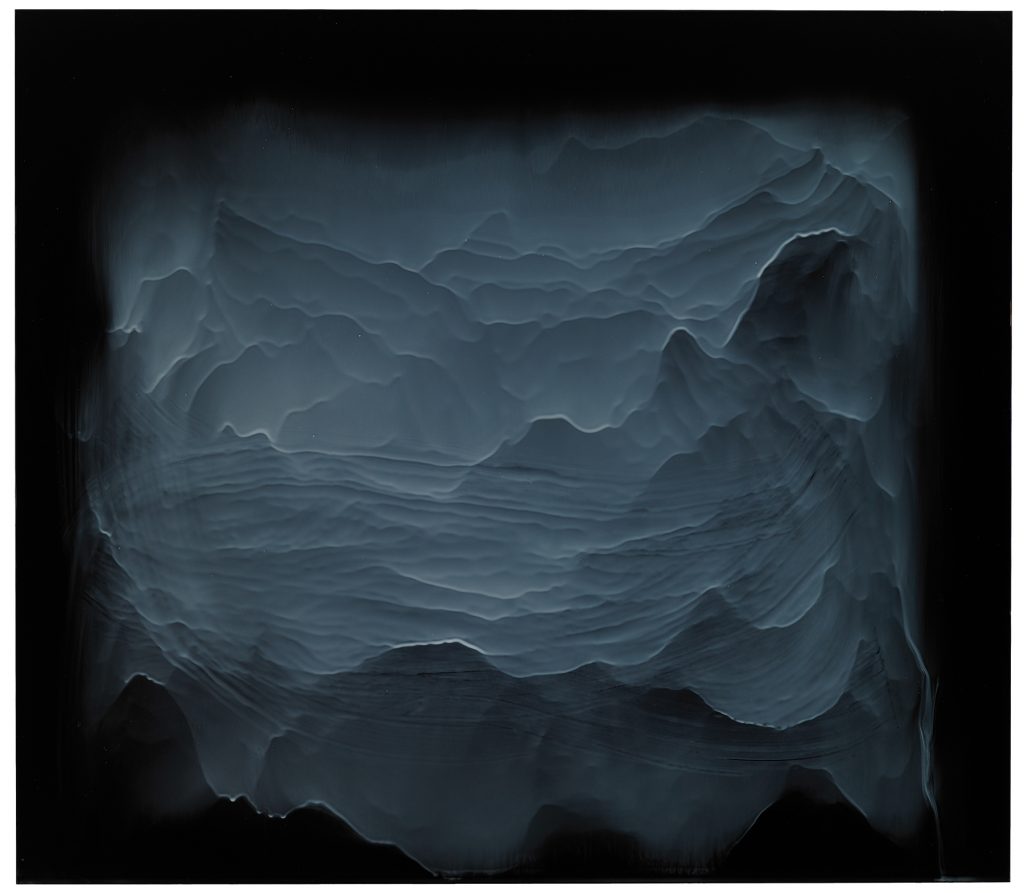
CAGE
Separate yourself from all things and also separate yourself from separation. Leave Your Cage. These two phrases, above all, Hans carried within himself when he thought of John Cage. Since his encounters with the American composer in the 80s and early 90s of the 20th century, he felt confirmed in leaving systems. Of course, at that time it was not an encounter at eye level, but filled with admiration, with the gradient of the admired towards the admired. The already old composer was spiritually closer to him than his teacher at the art academy, who also noticed this. In his eyes, the teacher made a fetish out of color and painting, which color and painting had never meant to Hans. For Hans, color and painting were rather a means of transport with which he could form a mental information. For the teacher, the reverberation was more important than the gong beat; for Hans, both were always one and connected, the beat and its reverberation.
Cage’s four operas, however (Europeras I-IV), had overwhelmed Hans at the time, although the admired artist did not want to do just that: overwhelm. The operas consisted of the repertoire of the particular house at which they were performed, and allowed arias from different eras, stage sets, actions, coordinated via a random system, to collide, to interact, in a way that had never happened before. Hans observed that the fragments did not level out exclusively (though they did), in the sense of destroying or dissolving through quasi-ironic questioning, but also to focus on their very essence, which was sound, silence, melody, atmosphere, and abstraction. The decision to do so was entirely up to the listener, and he felt uncluttered and liberated by contemporary art as never before. Through the juxtaposition of the arias, they even came to themselves in a peculiar way. It must be mentioned here, however, that with the return to melodicism and melancholy, for example with Arvo Pärt, the composer’s beloved cage was also abandoned again by Hans, but this was perhaps also intended by Master Cage. The fantastic mobilization of thought, however, continued to work in Hans’ thinking.
It revolved around how one can be contemporary and yet not serve the spirit of the times, but eternity. For eternity, however, he was conceptless, on the outside and without goal and without cognition, dependent on others’ models of thought. Much later he thought: “The normative authority of art is over. Its former heroes are gone, and no one has appeared since to really take their place. Instead, art has become a self-perpetuating, design-livestyle entropy that leads to a kind of virtuality hell. It follows its internal systems more and more than its media mission.” Hans, however, was interested in the artless in art, in what exists and works behind art. It seemed divine to him to bring art to life by letting it die (he had to wait a long time for someone like Hermann).
And further came upon him, who attentively observed contemporary art, even more: a vast sea of distance, self-sufficiency of referential, contextual, absurdity-saturated or hermetically reduced art, inconceivable emptying and surreal violence. That reality itself is a miracle, silent and inside, experienceable in the inner world, would have been possible only as a quotation, as a dream, as helplessness in the art of this beginning millennium, which affected him mentally. Nevertheless, he continued to paint and create pictures and objects.
When Hans made his first exhibition with Ulrich, the collaboration with the so differently thinking colleague began for him, still unconsciously and intuitively. For decades they were repeatedly separated by misinterpretations and misunderstandings, found themselves together again and became isolated again. Nevertheless, there were several exhibitions of the two, which showed them almost on an equal footing. Especially Hans became famous and this was a misunderstanding.
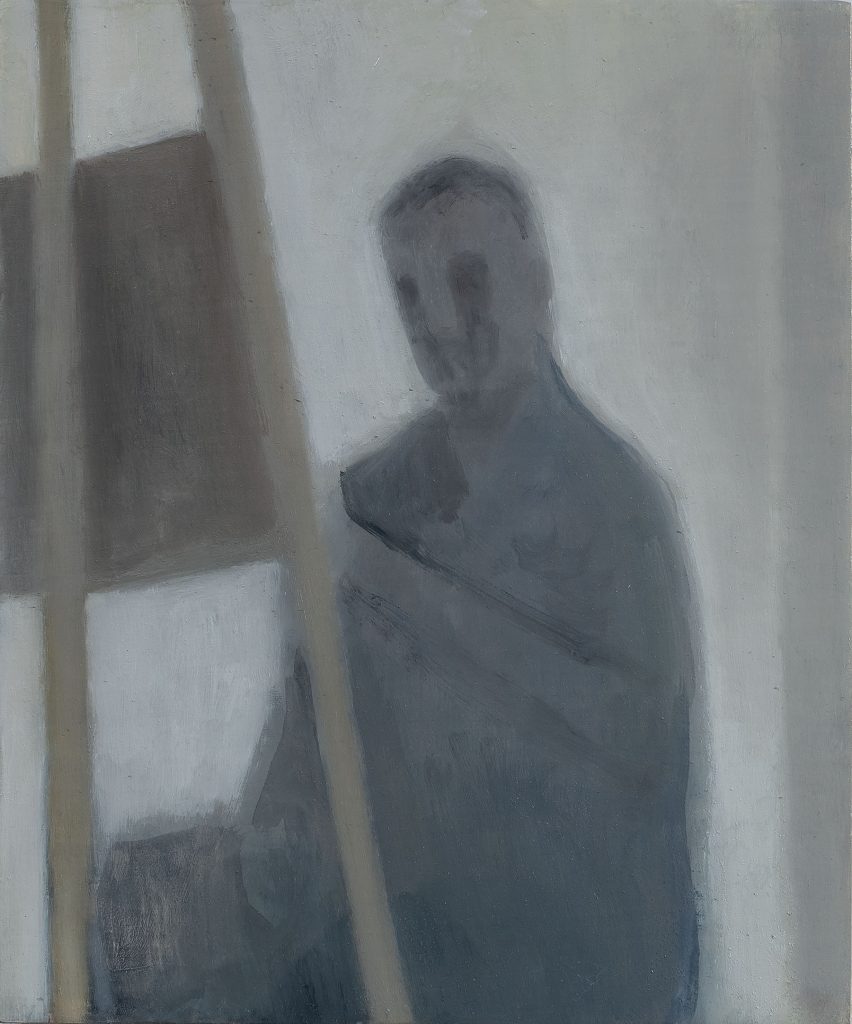
WONDER
Ulrich, meanwhile, was concerned with presence at the moment of viewing the picture and the act of painting. His utopia, modernity, or engagement with contemporaneity was weak to nonexistent. He did not want to produce absurdity, referentiality, distance, emptiness, coldness, a mirror of time. He was not interested in developing a figuration that was new, because he had a deep distrust of this newness as something hermetic. He saw himself as an interpreter, an instrument of an ancient, timeless-eternal process, the painting of the visible. His world was that of representationalism and figuration. In order to get there, he had to find out what a painting possesses besides its iconographic, iconological, art-historical, technical and physical conditionality and reality. It seemed to him that painting holds something individually different for each individual viewer and can make it possible to experience something that is located in the realm of aliveness and wonder, physically real but essentially supernatural in its transformative nature. Images were matter for him and this in the highest degree in a way controlled, moved, initiated by the human will. What was always surprising and, if he was lucky, overwhelming, was to feel the presence that painting imparted to him, always new, perceptible only in him as a single individual. One is present oneself and the painting is present and it meets merging in the moment of the recognizing conception of the picture information with the viewer, he thought. The picture information goes beyond the representationally visible into the non-representationally abstract, auratic of its being, he thought. By the way, for Ulrich, for example, a portrait had to be painted abstractly, so that it became strong in painting (its recognizability even gained for him, because the essence of the portrayed came to light) and vice versa, in his eyes, the non-representational painting lacked motivation (which comes from the motive, the occasion, the reason), then it was just empty and hollow and a prison to him. That’s why pictures of many non-representational artists were sublime and true to him, but pictures of the only outwardly simplifying, downdrawing, copying modernity, empty and blasphemous. For Ulrich, the medium of the painted image, generally the visible, could not only be superior to the word, it could even condition what was said. Painting was for him the first sale of man, since the spirit has risen from the relentless struggle for existence of the pre-artistic time, in which people could not yet paint the cave, could not yet carve the figure and the flute. Painting, in Ulrich’s attitude, works outside all erudition, directly, through the sensual eye into the abstract mind. It was for him the essentially human, which lets us reflect and form this reflection parallel to nature, by applying painting. Man could become fully present in the presence of the medium of painting and this was possible for everyone as soon as one learns to simply contemplate without bias, he thought. “In much that we believe, we do not take to heart that we could have actually perceived and thus instead: could have known. It is visible, the miracle, one must be only ready to open the eyes. This is what painting could take care of physically, sensually, spiritually, thinking.”
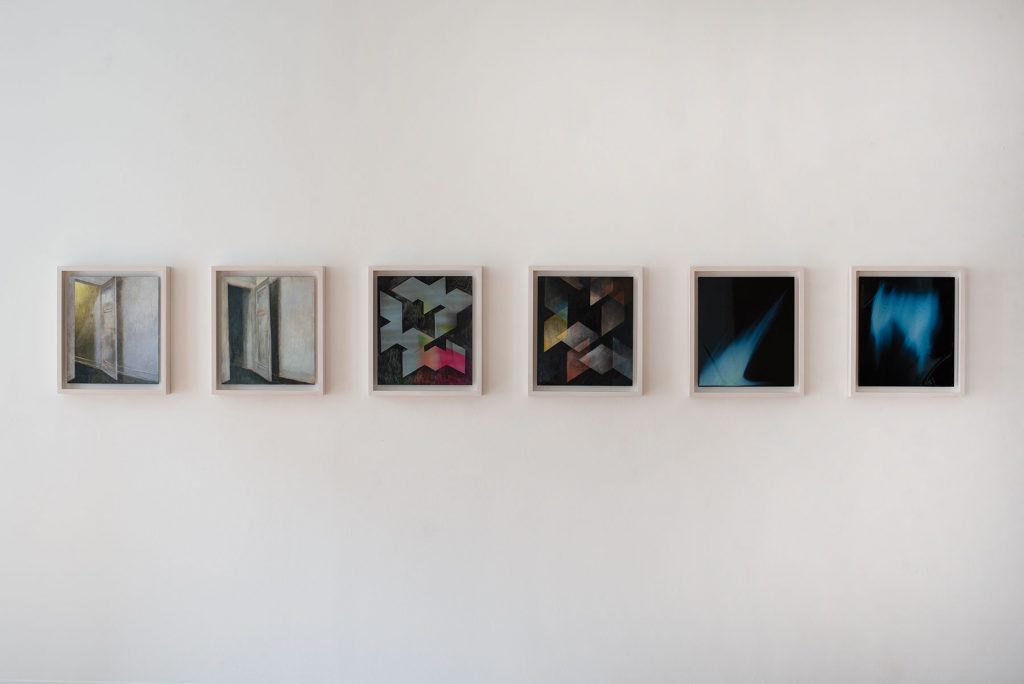
SILENCE
What a picture is, occupied the painter Hermann all his life. As a small child he saw nothingness as a picture. An image of horror, an image of hell: Behind nothingness appeared to him nothingness and behind it infinite time, eternal and forever: nothingness. Behind it was nothing. He could look into the starless depth of this black and timeless space, which he saw, which was none, but pure negation, as it can never happen more hauntingly in life, since he was still a small child and could see this unfiltered. But then he knew instantly by deciding and recognizing: There is not nothingness, but everything is in God, who is pure being. This seeing was bound to invisibility, at first, and was the image that is a word before it can be seen. This recognition in the invisible had been given to him and for that he was instantly grateful.
2006 then he saw and reached him an image preserved in Italy, which expressed exactly this and more, it was what he had recognized as a small child concluding, knowing, thanking: the perfect being, which as an image finds its correspondence only in the love itself as a person. The silence of the image spoke to him perfectly and indivisibly, as a person who is universally good. This image was the Volto Santo of Manoppello, which shows the resurrected Christ like no other image on earth. He wrote, “What distinguishes the image of the Volto Santo from other portraits is its presence. The image is not a memory of Christ, it is the presence of the Man-God marveling over us. Look at him. He is the redemption. Only in him is the full truth present. Van Eyck’s Christ, the monumental Triumphal Cross in Münster, Da Vinci’s Salvator Mundi, Van der Weyden’s Christ, Rembrandt’s Christ, even the Byzantine mosaics of Christ – all are memories or abstractions. Memory is abstraction. Abstraction is memory. The Volto Santo is not memory. The Volto Santo is pure presence. Pure being. Timeless awakening.”
Such realization did not belong to the art of the present time, and the time itself, in which people lived, put such things close to flowery folklore. (That no one could even begin to explain the painting technique of activating prismatic light reflection in the mother-of-pearl substance of the Volto Santo’s painting support, which is made of shell silk, should be mentioned here only in passing). All the contempt, ignorance, all the disinterest, perceptual obtuseness and dullness, everything that missed this picture by a hair’s breadth, and yet missed it, of his contemporaries, and here above all of the professional staff, did not change the fact that Hermann, with his work, had established and maintained contact with something that is eternal, even if the eternal seemed to have been sacrificed to the now. At the same time, the eternal was present to Hermann in the now.
What ultimately interested Hermann the painter was the exit from systems and the simultaneous recognition of a power that works above all and below all and in all. Therefore, the confession Libera me Domine, liberate me Lord, was for him the true liberation. The East Asian thought-separate yourself from all things and separate yourself also from separation-which had carried John Cage, admired by Hans, was contained in it. The separation from separation was for him the recognition of the Lord. The look of his master broke all chains for him. Here only the crown treasure, reason and love, in harmony, could show the way. The sleep of reason gives birth to monsters, the sleep of love makes abandoned, he realized. In Christ, who was to Hermann the only true image, the true correspondence of this principle, we arise, every day and every moment. “But the system of my time has devoured everything. And art, too, has been corrupted as never before. One could say that by now the appropriation of art by the system constitutes its essence. But the divine principle, that of freedom and love, must bring forth a system that is supra-worldly. The “system” of my time, on the other hand, is in the process of transforming everything free into a dream state. The absurd has displaced the miraculous.” This was Hermann’s thinking.
He could not write about his basic concern as an artist. He did not know it as verbalized. He could not put it into words. But one thing was certain: he felt that his basic concern was different from what surrounded him in the business of art. What increasingly got to him was the tremendous speechlessness that looked at him when he was supposed to reflect on his work. A sentence came to his mind: “What one cannot speak of, one must be silent about” by Ludwig Wittgenstein. “That would be a start to thinking about what I have created in my life as an artist,” Herman thought. As a basic concern, this very silence flowed through his work. The difference with the equally silent, world-famous painter Gerhard Richter, however, who lived in the same city as Hermann and whom he also visited in his studio, was that Richter had dedicated his silence to the images of the world. This silence of the successful colleague mirrored the world. And so Richter’s basic concern was the most apt of his innumerable catalog titles: Spiegel.
The silence of the so-called concrete art of the sixties of the 20th century was also the silence of a noli me tangere, the realization of a distancing oneself from the tangible over the nameless of an emptying attitude. “With the silence of all the art that operates referentially, contextually, conceptually, in the absurd, in death, in the things of the world that are close to us every day, in the years from the postwar period of the 20th century to the twenties of the 21st century, my silence is another,” Hermann thought. “My silence is not dedicated to the death of the world, to the absurd, not to nothingness, not to a false transcendence, not to spirituality that remains only vague and excludes the truth of the Christ event, but my silence is dedicated to the life of silence, which is not a body and yet a person.”
He said, “The last image. That’s what appearances are for, to give us images! The essence of existence is picturesque. The first snow. How to accept oneself and the existence in the moment of a beautiful picture! (To accept oneself and the existence and everything becomes a beautiful picture.) The essence of the pictures includes this moment, it is intrinsic to it. If one could really see, one would be instantly happy. The happiness is not the idea of the others from it, but the own personal decision to open the eyes. The painting looks at us, more than we can.”
But he did not touch the brush, not one painted picture is known of him, but his Volto Santo installation and his ability to mobilize Ulrich and Hans remain his merit in the visible world, he who was completely at home in the invisible.
When he joined Ulrich and Hans, in 2006, it was at first a shock and very strange for both of them. They first had to become friends with each other and one can say that in the course of time they found each other as it may have been in a time when eternity in God, who is love, was alone the fixed star of art, and yet, it was different, it was new, but the new was silent and quiet, lay within and was not understood at first, it was misjudged and overlooked. In Hermann’s eyes, which always saw like a painter sees, this collaboration with the two unequal colleagues was the chance to reach the true freedom, which means the greatest miracle, the freedom to live forever because it allowed him to reach people with the wisdom of images. Painters want to show something.
This is how Ulrich thought and this was the basis of the collaboration with Hans.
Art, which at the beginning of the 21st century circled around itself, which knew no transcendence, in the direction of past and future, at least not as Hermann claimed, could not arrive where it claimed to be: in the now. This meant, in his eyes, the loss of reality. By excluding the scientifically inapprehensible from the concept of reality, its perception was “chloroformed”. Exactly what was not intended, namely to fall into the dozing of a habit, set in at the moment of the fading out of the miracle. That is why the meeting of Ulrich and Hans in a time when truth and reality seemed to dissolve, whose mirror was modernity (with all its after and post versions) – could install reality as a miracle, the miracle of a good intelligence – this was like an awakening from deep unconsciousness. In the dawn of the friendly light of the totality of the two painters, his invisible friendship with the two bound and searching colleagues could become visible and shine. Painters want to show something.
People underestimated painting, they underestimated art in general and, above all, they underestimated reality, which they perceived as absurd, instead of recognizing it as a miracle. On the one hand, seemingly everything had become possible for the art of the beginning of the 21st century, so that everything possible stood side by side, but it was no longer of existential importance for the totality of people. They did not think it possible that the message of a picture could be contrary to its illustrative content (the classic fallacy of the picture), or they did not think it possible that beyond art there was the invisible, the supernatural, shining through art (the classic fallacy of an intellectual feudalism), and they did not think it possible that word and image could ultimately fall into one, they did not think it possible that art itself could have the normative foundation. The common thread of the meaning of art had been evaporated by a vast anything goes.
There may still be a channel on youtube on the historical platform of the Internet of that time called moskobus. There you would find a video called ZAUBERFILM. It is worth listening to this film even without a picture just as a soundtrack. There, the song of a blackbird, chamber music by Luigi Nono and the melodic rhythm of a Siberian Jew’s harp combine and confront each other. This meeting of three sounds, compositions, melodic rhythms embodies the three painters, Ulrich, Hans and Hermann.
Hans helped Ulrich and vice versa and the three became a miracle for each other through Hermann, working together to illuminate the unspeakable, only paintable, as meaning.
The mirror was broken, they became one. What the three of them produced may seem epigonal or incoherent from the point of view of the system that had survived at that time. In truth, however, something fundamentally essential had come into being that can enable a miracle to the weighed observer: to be happy because one loves and is loved. Time stands still in the beauty of the present.
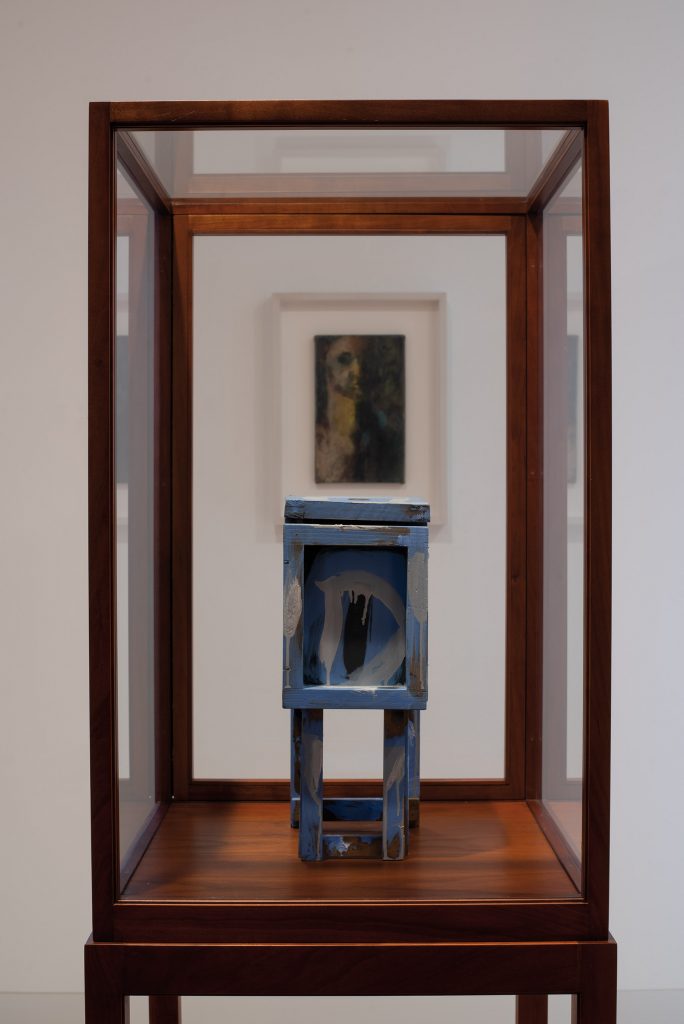
Friedrich von Winter, Belle-Île, 2121
(from the Novel: ICH )
